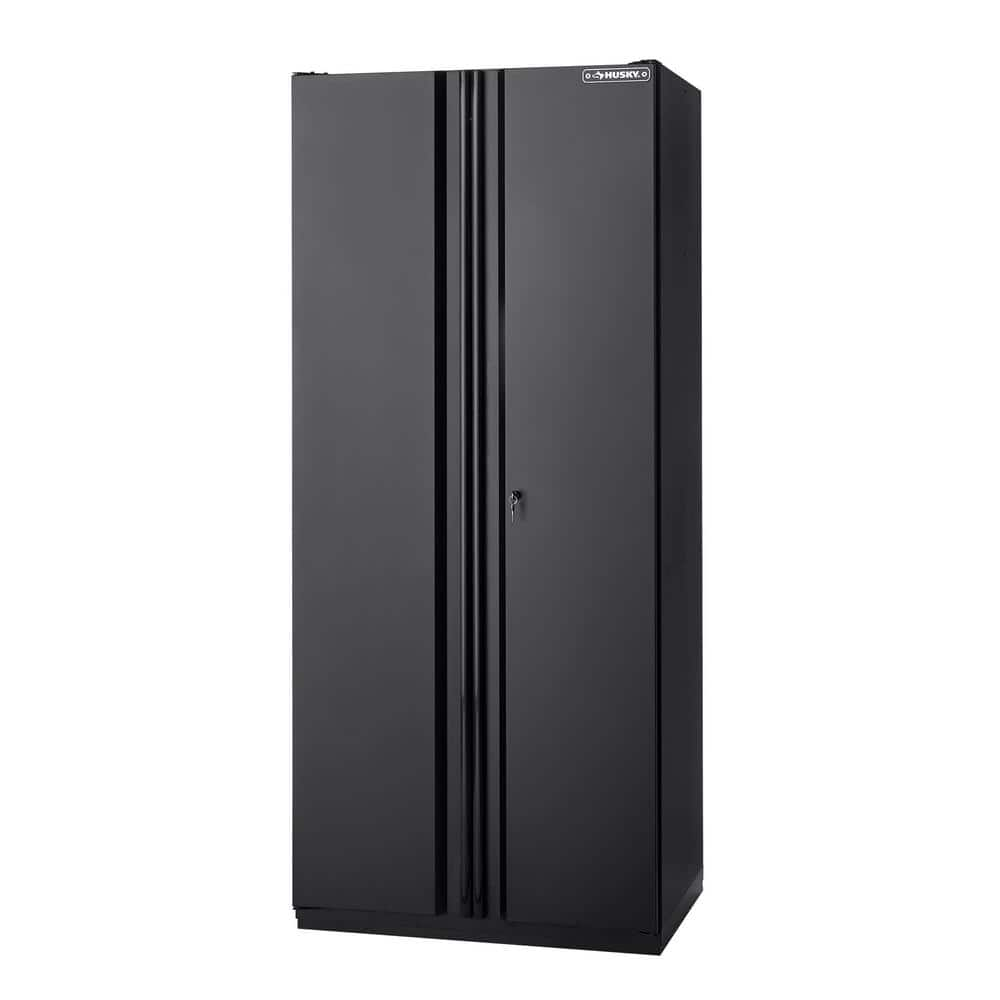Husky Ready-to-Assemble 24-Gauge Steel Freestanding Garage Cabinet in Black (30 in. W x 72 in. H x 18 in. D)
Three adjustable-height shelves provide lots of tool storage. Interior pegboards allow you to hang a variety of items. Add to your workshop, mudroom, pantry, or basement.
Keep your gear organized and safe with this steel garage gear cabinet by Husky. Its double-walled interior and two adjustable height shelves make it easy to customize how you store everything from tools to clothing. The gromet on the back panel lets you run power cords to a power supply while your belongings are safely locked away. This 72 in. H x 30 in. W x 18 in. D cabinet requires minor assembly.
- Quick and easy assembly with tools included
- Total product weight: 97 lbs.
- Adjustable feet offset any floor unevenness
- Sturdy double-wall doors include interior pegboard panels for additional storage (peg hooks sold separately)
- Fashioned with a backside grommet for cord access
- Withstands extreme temperatures, high humidity and everyday wear and tear
- Optional Husky 72 in. solid wood work surface and 15-1/2 in. steel L bracket sold separately online
Additional information
| Assembled Depth x Height x Width (in.) | 18 x 72 x 30 |
|---|---|
| Shelf Weight Capacity (lb) | 150 |
| Manufacturer Warranty | Lifetime Warranty. This warranty excludes incidental/inconsequential damages and failures due to misuse, abuse or normal wear and tear. This full warranty gives you specific rights, and you may also have other rights, which vary state to state. |






by Reggie
good assembly but the primary panels could have had the letters on them and I understand the shrink wrap is protecting the panels but hard to remove.
by Arnold
Assembly was challenging, but the result was very good. Very happy with this unit.
by Stuart
Very easy to assemble and very sturdy.
by Terry
Great cabinet, I use it to store ammo in and other gun related things. Will be buying another one soon!
by David
Great price. Easy to assemble. High quality. I plan on buying another one. What more can I say!
by Hogan
Easy assembly a couple screws were stripped and a magnet strip was missing but didn’t effect case.
by Laurie
I purchased this cabinet for storage inside my house. It is perfect and has plenty of room.